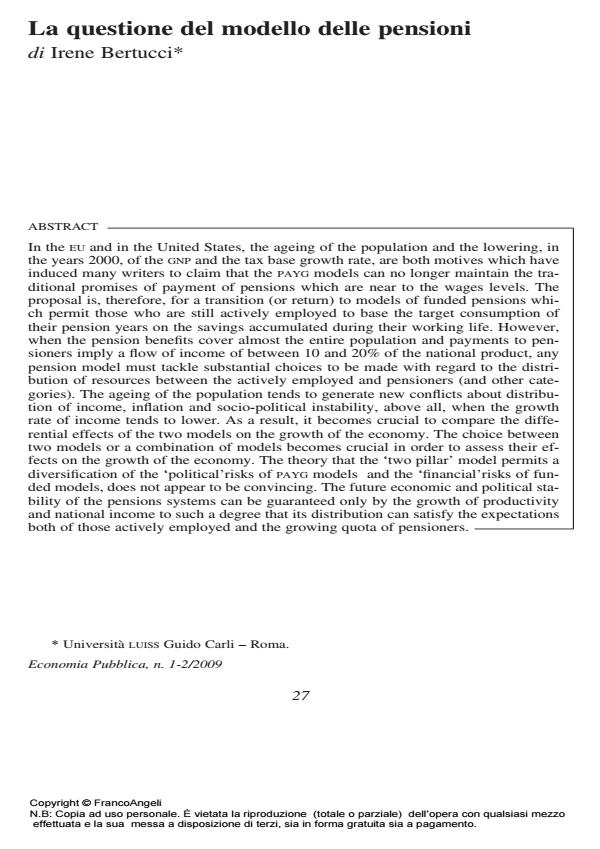La questione del modello delle pensioni
Titolo Rivista ECONOMIA PUBBLICA
Autori/Curatori Irene Bertucci
Anno di pubblicazione 2010 Fascicolo 2009/1-2
Lingua Italiano Numero pagine 30 P. 27-56 Dimensione file 1023 KB
DOI 10.3280/EP2009-001002
Il DOI è il codice a barre della proprietà intellettuale: per saperne di più
clicca qui
Qui sotto puoi vedere in anteprima la prima pagina di questo articolo.
Se questo articolo ti interessa, lo puoi acquistare (e scaricare in formato pdf) seguendo le facili indicazioni per acquistare il download credit. Acquista Download Credits per scaricare questo Articolo in formato PDF

FrancoAngeli è membro della Publishers International Linking Association, Inc (PILA)associazione indipendente e non profit per facilitare (attraverso i servizi tecnologici implementati da CrossRef.org) l’accesso degli studiosi ai contenuti digitali nelle pubblicazioni professionali e scientifiche
In the EU and in the United States, the ageing of the population and the lowering, in the years 2000, of the GNP and the tax base growth rate, are both motives which have induced many writers to claim that the PAYG models can no longer maintain the traditional promises of payment of pensions which are near to the wages levels. The proposal is, therefore, for a transition (or return) to models of funded pensions which permit those who are still actively employed to base the target consumption of their pension years on the savings accumulated during their working life. However, when the pension benefits cover almost the entire population and payments to pensioners imply a flow of income of between 10 and 20% of the national product, any pension model must tackle substantial choices to be made with regard to the distribution of resources between the actively employed and pensioners (and other categories). The ageing of the population tends to generate new conflicts about distribution of income, inflation and socio-political instability, above all, when the growth rate of income tends to lower. As a result, it becomes crucial to compare the differential effects of the two models on the growth of the economy. The choice between two models or a combination of models becomes crucial in order to assess their effects on the growth of the economy. The theory that the "two pillar" model permits a diversification of the "political"risks of PAYG models and the "financial"risks of funded models, does not appear to be convincing. The future economic and political stability of the pensions systems can be guaranteed only by the growth of productivity and national income to such a degree that its distribution can satisfy the expectations both of those actively employed and the growing quota of pensioners.
Irene Bertucci, La questione del modello delle pensioni in "ECONOMIA PUBBLICA " 1-2/2009, pp 27-56, DOI: 10.3280/EP2009-001002